Chimpcam Project
The Chimpcam Project the doctoral research of Betsy Herrelko involved a unique collaboration between chimpanzees, university scientists, zoo experts, and wildlife filmmakers. Funded to give a camera to a group of chimpanzees to 'see what they would do with it', we developed a cognitive research programme (the first for the chimpanzees of Budongo Trail) that revolved around the use of video cameras and computer tests.
Chimpcam consisted of several training periods and studies that introduced the chimpanzees to the concept of video and how to use a touchscreen monitor to make choices. With each study building on the last in degree of involvement and interaction with live video feeds, we were allowing the chimpanzees to learn about the relationship between themselves, what they saw on the monitor, and the camera. We began with a relatively passive use of video, self-recognition, increasing along the way to the ultimate step of providing the chimpanzees with a free-form camera to use.
Each chimpanzee's reaction to the studies will teach us about individual differences, comprehension and behaviour while working in a group setting, and the impact the addition of a cognitive research programme had on the group's anxiety-related behaviours. While the cognitive aspect of this project was the drive behind its design, the end result covers a broad array of topics including welfare (working with happy and healthy chimpanzees is of great importance to the staff and scientific outcomes), chimpanzee introductions, and public engagement with science.
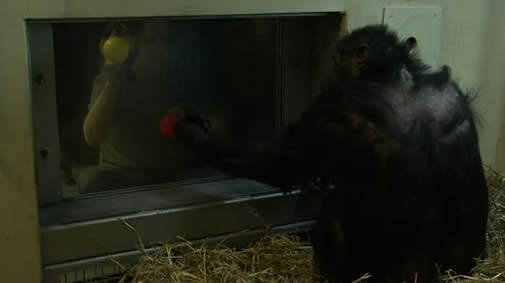
By figuring out the pattern that Claire (senior keeper) is presenting and touching the red ball, Cindy earns a food reward (dried figs). This targeting game allows us to help Cindy become familiar with touching a screen to make choices. In this instance she is touching the test window made of thick Perspex.

Emma takes a closer look at the mirror.

Cindy gets a peek at herself on the monitor (the camera is just above the top of the screen).
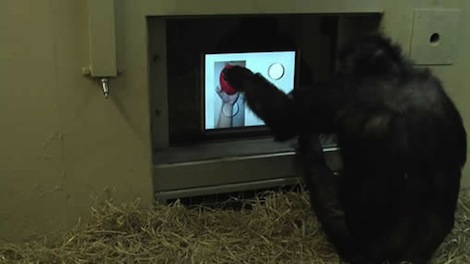
Cindy targeting to the red ball on the touchscreen monitor. This is one of the learning stages in becoming familiar with the touchscreen.
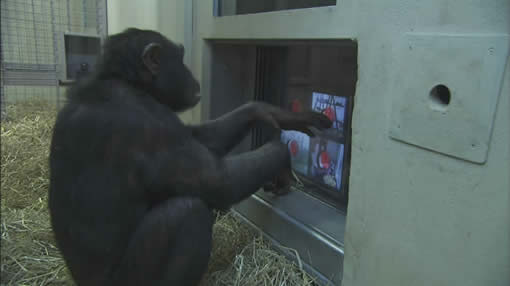
Live video from different locations in their house were streamed down to the research pods. The chimps were able to pick and choose which feed they wanted to watch by touching the screen. If they touched any of the pictures, it would pull up the full-screen video of that feed for 10 seconds before reverting back to the main menu of choices for the chimpanzee to make another selection. (Photo: Kevin Flay)
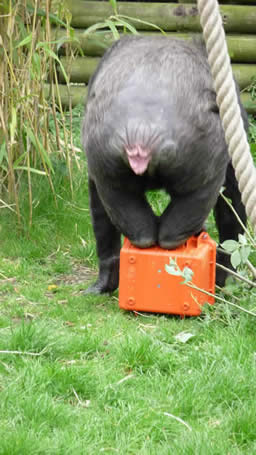
Emma tests out the durability of the case we were hoping to make into the Chimpcam (chimp-proof camera).
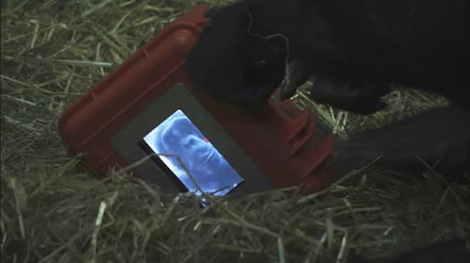
Cindy checks out the Chimpcam. (Photo: Kevin Flay)
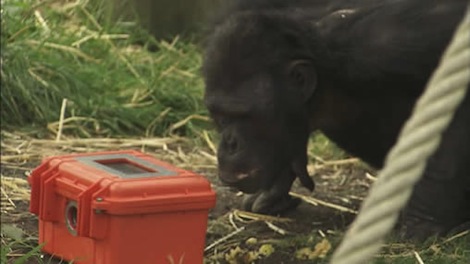
Kindia gets a closer look at the Chimpcam. (Photo: Kevin Flay)
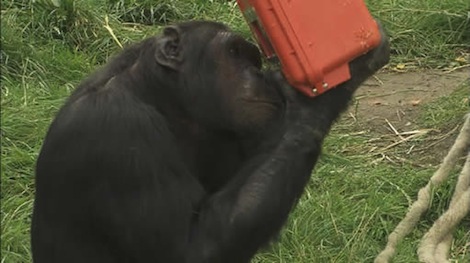
Qafzeh with the Chimpcam. (Photo: Kevin Flay)
Collaborators
Based out of the Royal Zoological Society of Scotland's Edinburgh Zoo, I have the pleasure of working on the Chimpcam Project with the staff and chimpanzees of Budongo Trail, scientists from the University of Stirling, and wildlife filmmakers from Burning Gold Productions (under commission of the BBC and Animal Planet).



Additional Support
In addition to the tremendous support from Psychology and Burning Gold Productions, I am honoured to have the support of several organisations:
![]()





Behaviour and Evolution Research Group, University of Stirling
Scotland-USA Graduate Scholarship
